Chicagoland wastewater-based epidemiology Heading link
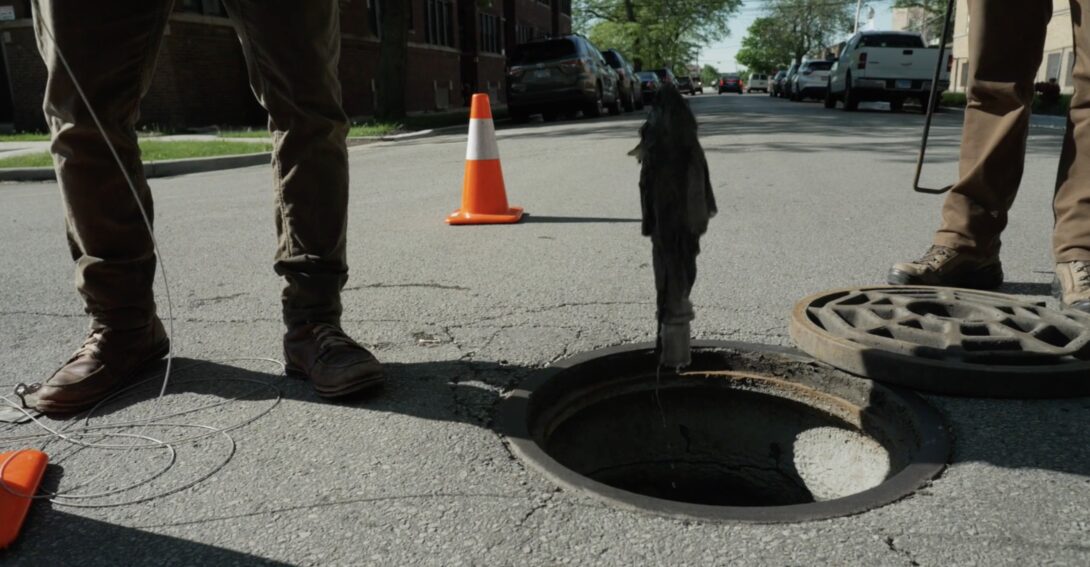
Our expertise in wastewater microbiology positioned us to pilot a wastewater surveillance effort in the Chicago area in 2020 when things came to a stop for the pandemic. We quickly put together an interdisciplinary team with people from UIC, Northwestern University, and Argonne National Laboratory that received pilot funding from the Discovery Partners Institute followed shortly thereafter by a larger prototyping project supported by the Walder Foundation. We began with Chicago’s three largest WRFs and six sampling locations in sub-sewersheds. We also implemented sampling at O’Hare International Airport’s domestic and international terminals and in six divisions of Cook County Jail (CCJ) to support prisoner management and outbreak containment.
In 2021 we expanded the Chicago work in partnership with CDPH and established a state-wide program in my lab in partnership with the Illinois Dept. of Public Health (IDPH) that has grown to about 80 different sites around the state. Through these urban and rural WBE programs, involving partnerships with state, county, and local health departments, wastewater utilities, and large facilities, we generate and analyze hundreds of wastewater samples weekly—providing enormous data resources for pandemic intelligence and prediction, and demonstrating the ability to design and implement comprehensive, multi-scale wastewater surveillance systems.
Wastewater based epidemiology (WBE)—monitoring potential pathogens in sewers and waterways—provides a rapid and cost-effective means to monitor COVID-19 infections in cities. As sewers and treatment plants collect wastewater from entire urban regions, WBE provides a means to monitor COVID-19 across large geographic areas and millions of people. Because SARS-CoV-2 RNA is excreted by pre- and asymptomatic individuals, WBE provides advance warning and more complete assessments of the COVID-19 epidemic than traditional testing. Combining distributed wastewater sampling with hydraulic modeling enables early-stage tracing of outbreaks back to local source locations with high infection rates. Moreover, deep gene sequencing enables tracking strain-level variation in SARS-CoV-2 and other viruses, distinguishing local outbreaks from new imported cases.
Antimicrobial resistance genes in the environment Heading link
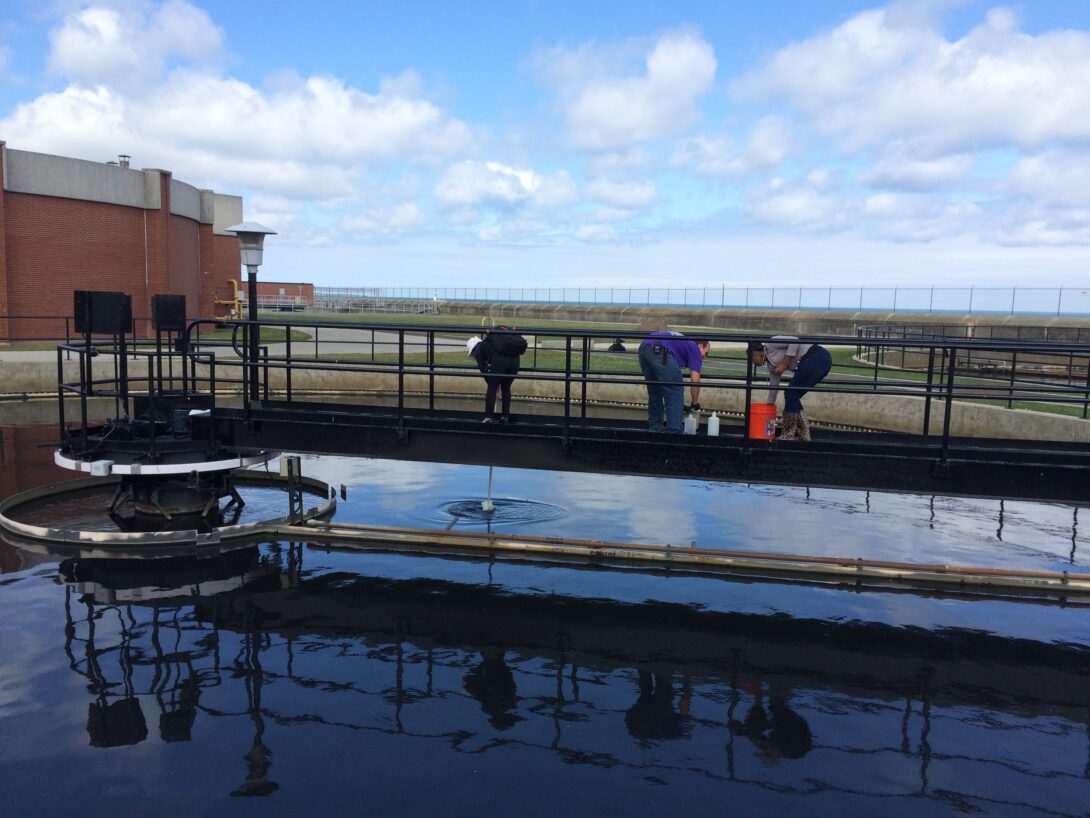
Antibiotic resistance has been identified as one of the most urgent challenges in modern public health, exacerbated by the prevalent use of antibiotics in livestock operations and medicine. Wastewater is a major reservoir for antibiotic resistance genes (ARGs), which may be retained in biomass from microbial bioreactors or can pass through treatment systems before ultimately being discharged into lakes and rivers and infiltrating bacterial communities in the environment. Wastewater can also be a useful sentinel surveillance of novel resistance mechanisms and to identify the emergence of multidrug-resistant organisms (MDROs) of public health importance.
Initially supported by a collaborative Chicago Biomedical Consortium award, we used shotgun metagenomics to comprehensively analyze viruses, ARGs, their relationships to mobile genetic elements (MGEs), and co-occurrences with antibiotic production genes throughout two full-scale municipal WRFs that discharge into Lake Michigan, one of which employs biofilm-based secondary treatment and another that uses a suspended growth system.
In 2022, we were funded by the CDC to study the utility of wastewater sentinel surveillance of resistance genes and organisms in healthcare facilities, with the idea that this has the potential to stratify healthcare facilities for targeted MDRO prevention efforts. If successful, wastewater surveillance may serve as an important tool for public health monitoring of MDRO burden across a large number of healthcare facilities.
Microbial food web dynamics in Lake Michigan Heading link
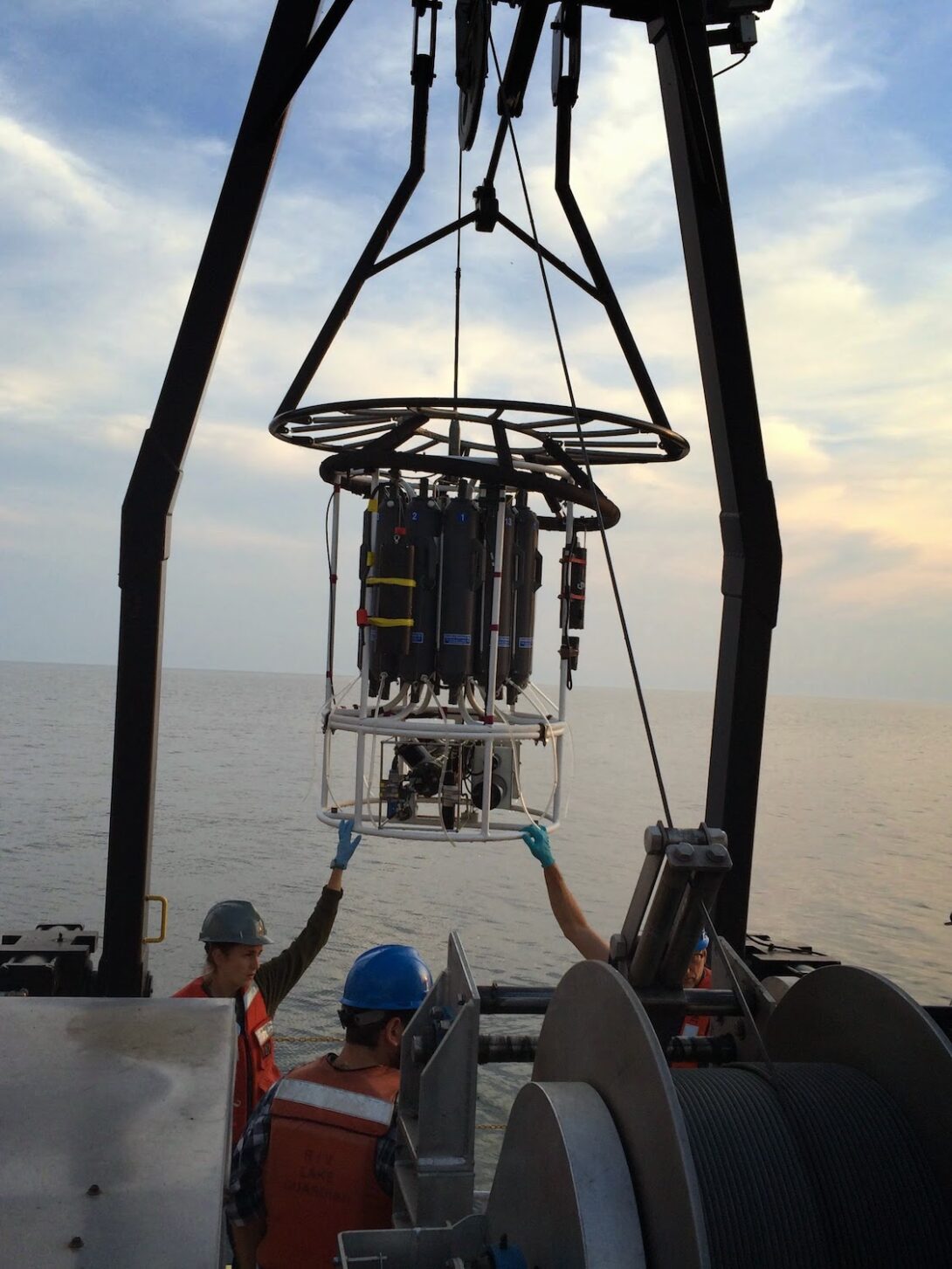
Microbes in freshwater ecosystems play a pivotal role in terrestrial carbon cycling and are expected to be highly sensitive to climate change drivers. The millions of microbes that inhabit each milliliter of water are crucial players in the Earth’s carbon cycle. Among many possible roles, arguably the most important one for bacteria in the carbon cycle is the use of dissolved organic carbon (DOC) and other components of the dissolved organic material (DOM) pool.
DOC is one of the largest carbon pools in the biosphere. The flux of carbon through the DOM pool is also quite large, equivalent to roughly half of primary production in many aquatic ecosystems. In aquatic ecosystems that experience allocthonous inputs of organic matter, bacterial secondary production can equal or exceed phytoplankton primary production. Carbon assimilation by microorganisms serves as the first step in the microbial food web; carbon flux through DOM is determined by assimilation and respiration by heterotrophic bacteria and ultimately by the rest of the microbial loop. How phylogenetic and genetic diversity impact this flux is not clear and is a major unsolved problem in microbial ecology.
Despite the importance of microorganisms in carbon flux, and the importance of DOM flux through bacterioplankton to the pelagic food web, only a handful of studies have used modern –omics techniques to study freshwater microbial communities and their members and none of these have been in Lake Michigan. The microbial food web has largely been ignored by the federal agencies involved in Lake Michigan monitoring, however nutrient inputs from terrestrial environments, the invasive dreissenid mussels, and growth/abundance of primary producers including cyanobacteria, picoeukaryotes, and phytoplankton have all been known to affect lake food web dynamics. The microbial community is often the first to respond to related small and large-scale perturbations such as pulses of nutrients and organic matter or shifts in their quality, quantity, and distribution.
This work aims to explore the microbial community composition (i.e., What is the diversity, genetic potential, and taxonomic structure?) and activity (i.e., What genes are being used, a proxy for metabolism?) in Lake Michigan as microbes break down and assimilate different organic matter sources that are then made available to other components of the lake food web.
Urban aquatic microbiology in the Chicago River Heading link
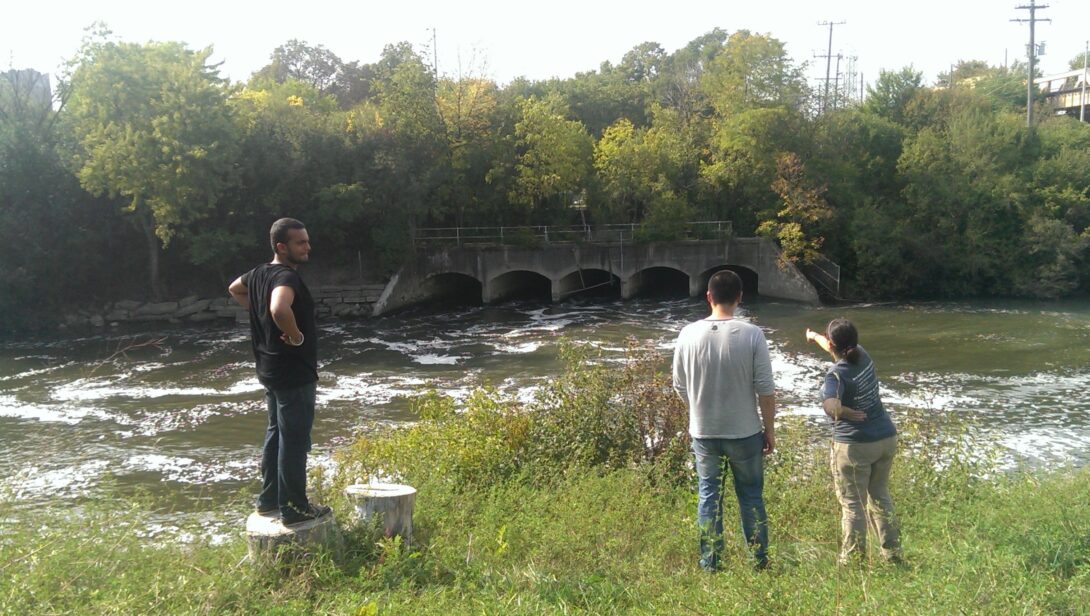
This work focuses on microbial community response to urban disturbances, engineered systems, and water re-use. Wastewater reclamation facilities (WRFs) represent hotspots for the concentration of nutrients, compounds of emerging concern, and microorganisms. The direct release of WRF effluent into surrounding aquatic environments impacts these systems both biologically and chemically in ways that are not fully understood. One of the great challenges in urbanized aquatic systems that receive WRF effluent is to better understand the fate, transport, and metabolism of potentially harmful contaminants and nutrients that are introduced along with the effluent. Assessing these effects is of considerable environmental consequence, especially in areas under the influence of high population pressure and stress to the health of freshwater systems. Furthermore, urban streams in various parts of the world are facing increased anthropogenic pressure on their water quality, and storm flow events represent one such source of complex physical, chemical, and biological perturbations. Microorganisms are important components of these streams from both ecological and public health perspectives.
We have been studying the microbial community from both a taxonomic and functional perspective to understand how populations of aquatic microorganisms and their biodegradation potential in the environment are influenced by effluent inputs. In 2020, we received funding from the Discovery Partners Institute, a University of Illinois System center focused on technology workforce development and research, to examine SARS-CoV-2 in wastewater and in the effluent-dominated Chicago Area Waterways. Our work has led to major, system-wide insights into effluent-dominated environments. For example, we examined microbial community dynamics during rain-induced storm flow conditions using shotgun metagenomics and identified significant shifts in the microbial community composition and functional gene content following a high-rainfall event in an urban stream of the Chicago Area Waterway System. These shifts had potential environmental and public health implications; increased effluent flow following rain shifted the stream microbial community from abundant freshwater taxa to those more associated with anthropogenic settings, such as Legionella. Shifts in the taxonomic composition were also linked to changes in functional gene content, particularly for transmembrane transport and organic substance biosynthesis. We also observed an increase in relative abundance of genes encoding degradation of organic pollutants and antibiotic resistance after rain.
To further contribute to the overall understanding of microbial community composition and dynamics in an effluent-dominated urban aquatic system, we have taken advantage of the recent implementation of disinfection of effluent in a WRF on the North Shore Chanel of the Chicago River to identify the taxonomic diversity and ecological contributions (functional gene potential and expression) of effluent-derived microorganisms. We have examined patterns of assembly and distribution throughout the system within the framework of disinfection and biodegradation potential. We showed that while some organisms, such as members of the Bacteroidetes, are inhibited by UV disinfection and overall diversity of the microbial community decreases following treatment, many organisms not only survive, but remain active. These include common WRF-derived organisms as Comamonadaceae and Pseudomonas. When combined with river water to mimic stormflow conditions, these organisms can persist in the environment and potentially enhance microbial functions such as nitrification and antibiotic resistance.
Microbial ecology in Sablefish (Anoplopoma fimbria) Aquaculture Heading link
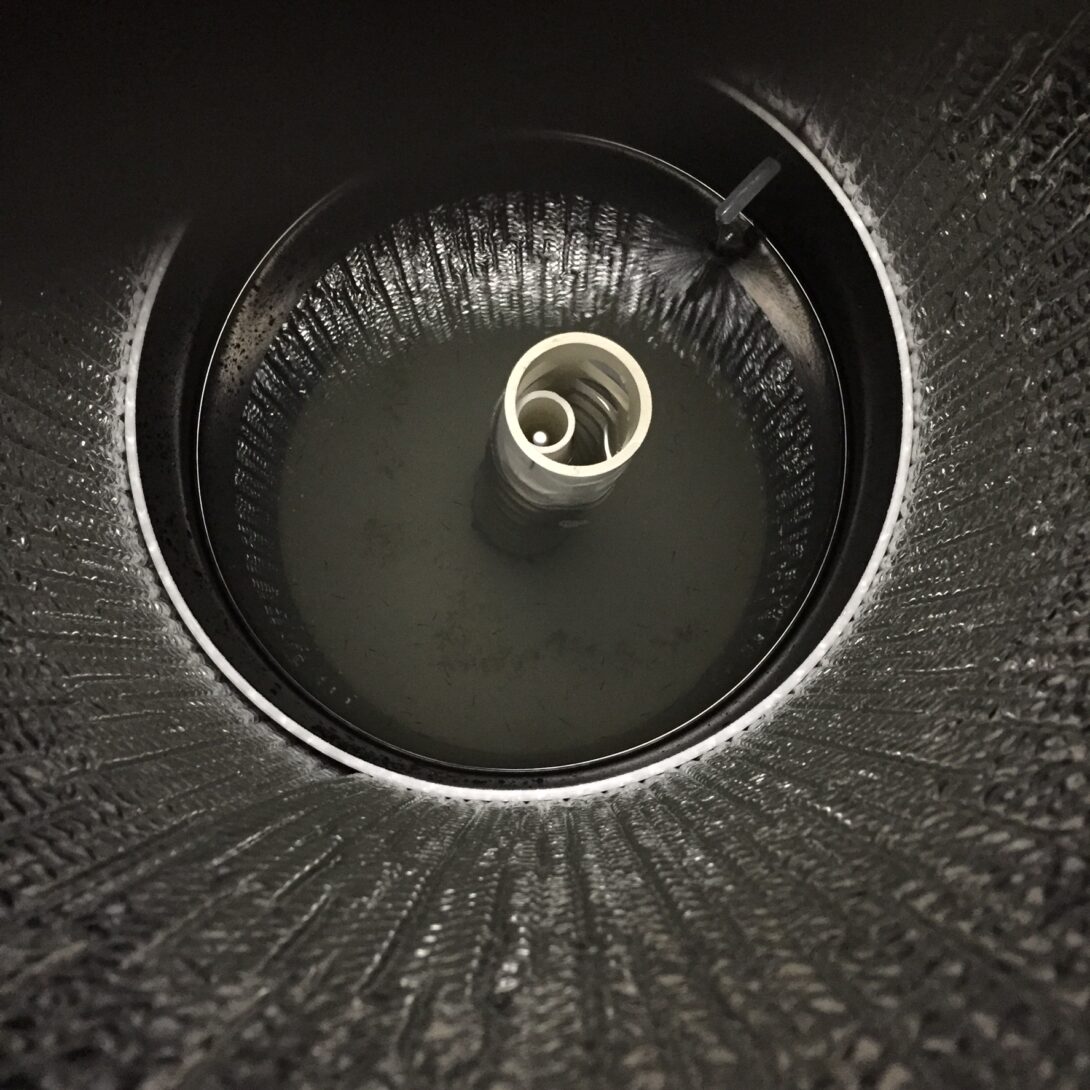
Aquaculture conditions can support the growth of bacteria in culture tanks, which can benefit or harm fish depending on the balance of pathogens and beneficial microorganisms. Most diseases can result from opportunistic pathogens found in the water, but in situ conditions can influence the host’s immune system and promote the proliferation of pathogenic organisms. We hypothesize that culture conditions (algal paste and clay additions) alter the culture environment in different ways, shifting the microbial community composition, which includes both pathogens and beneficial organisms. We are investigating this shift in order to identify pathogenic and beneficial bacteria and the conditions that promote their growth, and test whether we can create an optimal amendment that will include or favor beneficial bacteria.
We are also investigating the role of Dimethylsulfoniopropionate (DMSP), an organic sulfur compound produced by marine phytoplankton and found high concentrations in areas with high productivity, in shaping the microbial communities and influencing fish growth and survival. DMSP is released into the dissolved organic matter pool upon algal grazing and lysis where it is converted to dimethylsulfide (DMS) primarily by marine bacteria that use it as a major sulfur and carbon source. Animals higher up the food chain can eavesdrop on DMSP/DMS olfactory cues from algal consumption to find their food. DMS stimulates feeding behavior in a range of animals, including birds and marine fish.
The use of DMS precursors can also stimulate feeding behavior and greater growth in aquaculture. In aquaculture, algal cells in greenwater could potentially release DMSP as dead algae decompose (or are eaten by rotifers in warm water environments).